Dry goods! Discrete Manufacturing MES Solution Detailed Tutorial
The MES system is a core operating platform for manufacturing and manufacturing. Provides optimized management of all production activities from production orders to completion of products, uses timely and accurate information collection, guides, initiates, responds to, and records management of the factory's production activities so that they can respond quickly to changes in conditions and reduce non- Value-added activities, increase the transparency of the operation of the factory and implementation efficiency. MES can not only improve the return on equipment investment, but also help timely delivery, speed up inventory turnover, improve the performance of earnings and cash flow, more importantly, contribute to the improvement of enterprise product quality and continuous improvement, in order to maximize customer satisfaction Degree, enhance corporate brand image and core competitiveness.
A complete set of MES solutions including production data collection, basic development platform, and business suite on-demand selection, including production modeling, scheduling, production operations, quality management, materials management, equipment management, tool management, tooling control, and extended analysis Application management and analysis modules such as applications. Make MES system and ERP system and automation system realize two-way information integration, receive workshop production plan issued by ERP, and carry out detailed job planning and task assignment, and feedback production, quality and other information to ERP system, and realize manufacturing to MES system at the same time. Real-time collection, management, and feedback of process information, batch tracking, quality tracking, improved enterprise productivity, improved product quality, material management, effective monitoring of key equipment, and efficient production process and management decisions integrated.
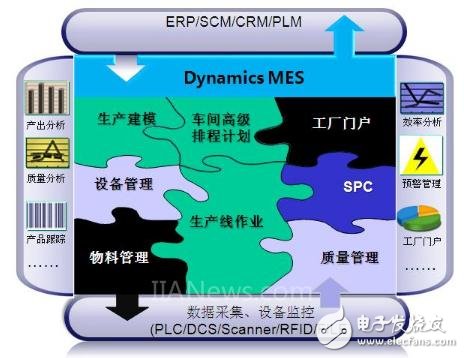
Platformization: Incremental iterative system based on platform architecture to adapt to the rapid customization and rapid development of MES projects;
Sustainability: Software stability, low maintenance cost, and sustainable development to meet the requirements of long-term use and easy upgrade of the company are considered for long-term construction cooperation;
Openness: The scalability and integration of software; support the development model based on software assembly to meet the company's growing business needs;
Scalability: Provides advanced secondary development and extension to capabilities, enabling companies to have the ability to configure and develop some customized requirements after training, making the system flexible and adaptable;
Integration: ERP / MES integrated solution, MES compliance with ISA-95 standards, you can easily achieve the integration of ERP / MES applications;
Integration: MES provides a data integration service that can easily integrate with third-party systems, including ERP/SCM systems, to meet the company's continuous expansion to business requirements.
The MES system fully adopts advanced design concepts. The system kernel adopts many leading technologies such as object-oriented, componentized design, and multi-layer distributed architecture, ensuring the security, stability, scalability, maintainability, and design of the software. Inheritance and resource reuse. Relying on the advanced SOA technology architecture, MES can be highly integrated with the Microsoft OFFICE suite, PDM, ERP, and other peripherals.
3 design goalsCombining with the overall development strategy of the company and the status quo of information construction, information construction follows the principle of overall planning and step-by-step implementation. It is expected to complete the planning, design and implementation of the MES manufacturing execution system in the two-year project cycle, complete the overall objectives of the enterprise production management informatization solution, and realize the overall management of production scheduling, production processes, equipment, materials, quality and personnel. With control, build a scalable production management information platform for enterprises, making the production process transparent, efficient, flexible, traceability, control in the event, high customer satisfaction, low-cost operation, so as to fully enhance the company's Core competitiveness
In response to the above major needs, the overall work objectives for determining this solution are as follows:
1) Establish hardware and software platforms for real-time data acquisition and visual monitoring of production processes; realize real-time acquisition, centralized monitoring and closed-loop feedback of production equipment operating parameters, operating conditions, logistics and quality information, and support the company's expanded applications.
2) Establish a production scheduling model based on real-time data, as well as unified management and rational allocation of manufacturing resources (equipment, personnel, tools, and production materials), to optimize and dynamically manage shop floor operations and schedules, and improve the transparency of product manufacturing processes. , equalization and equipment utilization to ensure the product's manufacturing cycle.
3) Establish a product inspection model for the manufacturing process and implement statistical process control (SPC) for quality data (including multiple data sources such as real-time data collected during processing, field data or historical data for routine quality inspections), and real-time monitoring of key production In the quality aspect, the quality stability and process capability of the manufacturing process are analyzed, which provides an important basis for product quality improvement and timely adoption of corresponding measures.
4) Complete unified information flow planning and comprehensive dynamic integration of the company's ERP, MES and other major information systems, based on this:
a) Realize the complete closed loop of product data, process data, manufacturing and management data, and dynamic sharing based on business processes, as well as the linkage of relevant manufacturing data in an integrated process based on manufacturing planning, job scheduling and resource operation and control; when products and processes When the data changes, it supports the dynamic response and update of the manufacturing process.
b) Through the integration and collaboration with ERP systems, a push-pull combination planning system supporting mid- to long-term and on-site real-time production operation plans is formed to support rapid response to customer orders and effective handling of production anomalies, supporting JIT (just-in-time production), etc. Application of advanced management mode.
c) Support on-line real-time browsing and full-association query of related drawings, documents and technical documents for products, processes, quality, operations, etc. at the manufacturing site (workshop).
d) Support product and quality data traceability and multi-view query throughout the product lifecycle, and customize the various types of analysis and statistical reports through the report center to provide decision support information for corporate managers.
5) Cooperate with enterprises to formulate MES system standardization management processes and informationization job responsibilities, and form a standardized management mechanism for the production management and manufacturing execution process under the information environment.
4 System Architecture
In order to solve the problems of enterprise applications, Power Control Technology has developed the basic development platform product of the General Manufacturing Execution System, FinforWorx, with the concept of precise management. Force Control FORCECON product family is based on the FinforWorx platform as a core component-based MES platform development framework, which mainly completes the system configuration and integration of the data layer, service layer, storage layer, configuration side, and visualization layer in the MES system. The framework formed by the FinforWorx platform includes system services, engineering models, reporting tools, visual components, etc. The portal can be customized based on user or work roles, system permission configuration, system style configuration, and tool set configuration.
The FinforWorx platform's data layer mainly integrates real-time data and static data from various data sources such as SCADA, real-time databases, and relational databases into the platform's relational database to provide plant model-based services and real-time data services for the management cockpit. Visualization services. The data storage layer supports the storage of structured and unstructured data.
The FinforWorx platform itself integrates rich graphical analysis components, including reports, alarms, trends, histograms, pie charts, etc., which make the visual layer engineering development faster and the interface display more intuitive.
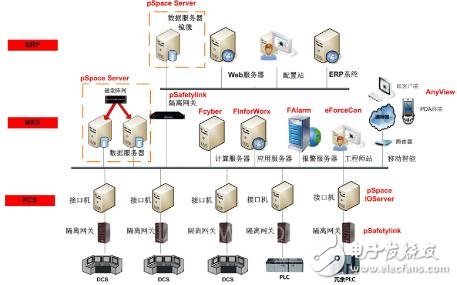
System architecture diagram
5 system functionFocusing on the FinforWorx platform, according to typical industry characteristics, developing industry application suites and building MES systems can provide decision makers with powerful basis for optimizing production resources and meeting corporate decision-making needs. The application suite focuses on the management of the production process so that the factory can respond quickly to the production process, reduce production activities without added value, and find important reasons that affect quality, thereby increasing production efficiency and quality, and making the production process transparent , controllable and benign production status. It can provide business users with economic parameters and plant operating performance parameters and can easily perform advanced report generation and analysis. Building a manufacturing execution system based on this platform can effectively shorten the project cycle while ensuring the system's high reliability, high scalability, and high efficiency.
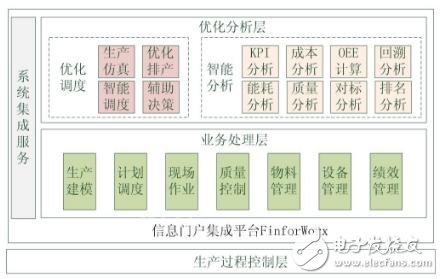
Business Architecture Chart
In the business application suite, the MES system can be divided into multiple levels.
Production process control layer:
The production monitoring system consists of monitoring computers, logic controllers, alarms, and LED billboards distributed in the assembly areas and machining lines. These monitoring terminals provide dynamic monitoring screens, alarm signals, and process information to reflect the operating status of production equipment. And its related data, the operator can complete the following monitoring operations through the monitoring computer:
Equipment operation status and alarm monitoring
Quality status and alarm monitoring
Workshop production material monitoring
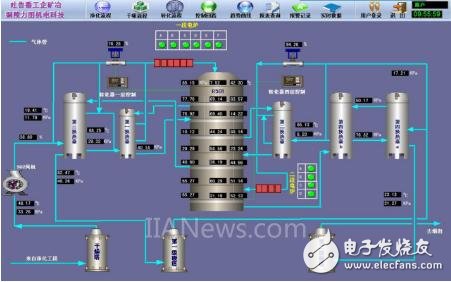
Production information monitoring
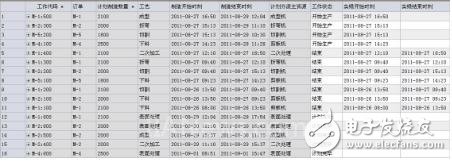
Production progress monitoring

Reports, kanban display
Business processing layer:
Responsible for the overall operation and management services of the organic elements (people, machines, materials, methods, and rings) throughout the workshop, including:
Production modelling: The complete modeling of the manufacturing elements of the workshop's production materials (components, finished products), including the five elements of man, machine, material, method, and ring; this model will be a procedure for each production order to guide and Constrain production, in addition to the function of the physical factory to create a logical model.
Planning and dispatching: Responsible for receiving production orders issued by the ERP or imported manual production plans, and planning adjustments and scheduling, workshop planning simulation, planning monitoring scheduling, plan analysis; is the heart of the entire MES system, used to drive the implementation of the production site And supporting business process execution;
On-site operation: Responsible for the processing of production tasks, including job acceptance, data collection, completion, and sequencing, are the core modules of the system and the performance of the system's execution;
Quality management: responsible for quality inspection of workshop production process, including quality control, quality inspection (automatic, manual), quality SPC analysis and monitoring, quality alarm and exception handling, quality traceability.
Material Management: Responsible for the management of all material logistics processes within the workshop, including: lack of material alarms, error prevention and collection of materials, feeding, material transfer, statistical reports;
Equipment Management: Responsible for equipment lifecycle management in the workshop, including: equipment maintenance, monitoring, alarm, resume, OEE analysis, statistical reports;
Performance Management: Summarize and integrate manufacturing operations data, and provide key performance analysis reports, including production performance management, quality performance management, inventory performance management, and maintenance performance management.
Optimize the analysis layer:
Optimize scheduling: According to the actual business, establish a business model, and apply advanced algorithms such as particle swarm optimization and BP neural network to support advanced applications such as production simulation, optimized scheduling, intelligent scheduling, and assistant decision-making.
Smart analysis: Create business statistics, analysis reports, business data dashboards, KPI analysis of key performance indicators at all stages of production management, and monitor the performance of the entire production operation through data.
System Integration Service Layer:
In the MES informatization project, it may involve the integration and integration of MES and other information systems (such as ERP) to ensure the efficient operation of the entire system.
The MES system provides an open integration layer to realize the integration relationship with ERP through the SOA architecture so as to meet the requirements of the enterprise integrated solution.
At this point, we basically outlined the business function outline of the MES system. The core part of the system is the provision of related services for the production management service layer.
From the perspective of the overall architecture of the information system, in addition to the business suite, it also includes the acquisition service layer and the system UI application layer.
Equipment acquisition service layer:
The equipment collection service based on the integrated platform of the information portal completes the collection of on-site production data, and passes real-time data on the equipment (such as the time of machine on/off, the start/end time of machined parts, the processing coordinate information, F/S value, alarm information, and machine tool efficiency statistics. The collection and management services of , spindle load, other automatic measurement data, etc., provide MES production management with production site data.
System UI application layer:
Responsible for handling system interactions for user operations, including permissions, data access, and business operations, and that the user UI (C/S client, BS's factory portal) is extensible and can be easily inserted into new functions. The user access layer can greatly improve the user experience. The user or administrator can do some simple secondary development, including system configuration, user interface configuration, report design, and other functions, so as to enhance the application value of the system.
6 System Product DesignInformation Portal Integration Platform (FInforWorx)
Force Control Technology has developed the FinforWorx, a basic development platform for general-purpose manufacturing execution systems, with the concept of precise management. The MES system adopts the force-controlled intelligent production information portal integration platform FinforWorx to build an enterprise management platform. This platform provides enterprises with continuous improvement in production dynamic management cockpit, real-time decision scheduling, equipment dynamic management, production early warning, energy management and other production applications. The production process to achieve the purpose of improving enterprise production management.
The force-controlled intelligent production information portal integration platform is completely modular and provides basic plant data modeling and various types of analysis components. The platform can be divided into collection layer, data layer, web service layer, web front end, etc. The dynamic production management of enterprise intelligent manufacturing provides a portal platform for data analysis, diagnosis, and display. The management and control center for energy conservation and consumption reduction can provide horizontal and vertical energy analysis, energy diagnosis, energy audit, and energy equipment diagnosis.
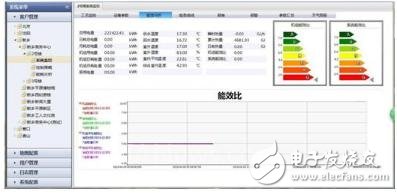
Intelligent production information portal integration platform features include:
Production equipment management: including: production device management, equipment account management, equipment operation management, equipment maintenance and management.
Management of measuring instruments: Including: measurement instrument ledger, measurement instrument verification management, etc.
Production planning management: Including: product capacity management and planned production management.
Production report management: Including: production report template, production daily report, monthly report, quarterly report, annual report, and production completion report.
Production scheduling management: Including: production abnormality management, transition class log management, and dispatch log management.
Energy Management: Including: energy metering equipment management, energy plans, performance, costs, and energy statistics analysis.
Production process monitoring, including: production process flow charts, energy flow charts, etc.
Key Performance Indicators KPI Display, Statistical Process Control Analysis SPC, etc.
Equipment Operation Efficiency OEE Management

Platform features:
Intelligentization: analysis of multi-faceted and multi-angle intelligent production processes and support for decision-making
Versatility: Provides visual modeling tools that can efficiently model the core elements of industrial processes based on industry characteristics to make the system configurable
High extensibility: The custom function module can be quickly and loosely coupled to the message bus, and can utilize the basic services provided by the system.
High performance: For large-scale event processing, services can be deployed at multiple points, and any service node can be expanded to a newly deployed physical server. Service load balancing can be performed automatically in the server cluster.
High reliability: The basic service node of the entire system supports the cluster architecture and supports online failover in the case of transaction integrity.
Enterprise-class real-time history database (pSpace)
The system needs to record a large number of monitoring data with time characteristics, and comprehensive display of data reading, archiving, query and analysis. This project uses real-time history database software that does not depend on any relational database. Enterprise-level real-time historical database software runs on the database server. The database server can set cluster redundancy (disk array) according to requirements. The real-time history database software supports cluster redundancy.
The real-time database system software realizes real-time acquisition of production process device data and continuous storage and statistics. When the data is stored, it is stored according to the compression ratio parameter set for each data point. The software enables networked production monitoring and data analysis of (system projects), enabling (system projects) to grasp the safety production status of subordinate production companies in real time.
Power-controlled enterprise-class real-time database pSpace is a high-performance, high-throughput, highly reliable, cross-platform real-time/history database system that can be used for acquisition, compression, storage, processing, analysis, and other production information with time characteristics. pSpace provides a full range of industrial communication interfaces and ERP business interfaces to achieve perfect integration of production monitoring and dispatch management. Can greatly improve the company's intelligence and decision-making accuracy and speed.
Multi-platform support capabilities can run on Windows and Red Hat, Ubuntu, CentOS and other Linux operating systems.
Enterprise real-time history database pSpace product features and indicators
Support online continuous storage and achieve a storage speed of 300,000 records/sec.
Enterprise-class real-time history database Single server should be able to support 1 million data points.
The data compression rate can be as high as 40:1 (50:1);
The database single client has a single query speed of 200,000 records/second.
The real-time history database 1000 clients concurrently query up to 20,000 records per second.
The real-time library should stably support 256 client concurrent queries.
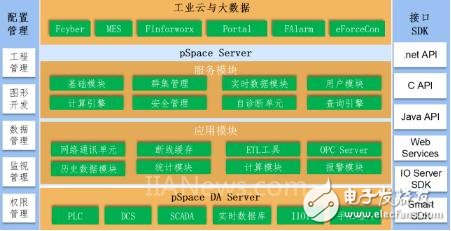
SCADA Platform Software (eForceCon)
This system SCADA uses force-controlled SCADA platform software eForceCon V5.0. The platform is based on a distributed regional real-time database. The distributed real-time database technology can ensure the accurate output of production data and complete the visualization. The unlimited hierarchical structure of the real-time database enables Large corporate information is at your disposal. Force control SCADA platform configuration software has a flexible system application architecture, can freely build applications of different sizes, meet the user's requirements for the diversity of enterprise information, users can flexibly build solutions for enterprise applications.
eForceCon has a distributed data source management mode. The visual human-computer interaction interface does not need to be programmed. It can directly interact with a remote database through the remote data source configuration method to complete various functions such as production monitoring, query, and curve analysis.
The features of the SCADA platform are as follows:
- Support integrated software platform with distributed real-time database as the core of the system, with open, integrated, object-oriented development environment, system developers can easily use.
- Support client/server (C/S) and B/S ("thin" network client) architecture. Different network nodes use distributed data source management to exchange information.
- Soft redundancy, hard redundancy, and duplex hot standby redundancy mode.
- With stable, flexible architecture and scalability, it can support more than 10,000 points of communication, flexible and reliable, easy to expand, the addition of the client does not affect the overall system performance,
- With complete alarm management capabilities, support for ISA 18.2 alarm standards, can support multi-level alarm management, sound and light alarm output and parameter online adjustment and other functions.
- Provisioning server for managing, editing, monitoring remote node engineering and platform status.
- Provides a programming language for users to use, and supports the development of user-defined functions.
- Support user-defined functions and secondary development components, and integrate third-party plug-ins and executable programs.
- Supports large-resolution window graphics display, providing visual development tools based on object-oriented templating.
- Supports the full release of C/S clients to the Web. The Web container supports third-party plug-ins for publishing.
- The project developed by the software should have the project file backup function, and should support project file password protection.
- Support the use of users, permissions, priorities, security zones to provide users with security verification.
7 Application CaseRainbow Textile Group
Tianhong Textile Group was founded in 1997 and is one of the world's largest cotton core textile suppliers. It specializes in the manufacture and sales of high value-added fashion cotton textiles. It has now become one of the top 10 competitiveness enterprises in the national cotton textile industry.
Tianhong China is headquartered in Shanghai and its industrial layout extends from the Yangtze River Delta to its central region. Currently, there are 12 production bases in Xuzhou, Taizhou, Nantong in Jiangsu, Pujiang in Zhejiang and Dong Nai in Vietnam. The Group has an asset scale of RMB 5.5 billion and an annual turnover of RMB 5.472 billion. The company covers an area of ​​1,322,000 square meters and its industrial plant covers an area of ​​552,000 square meters. It currently has a production capacity of 800,000 spindles and 900 air-jet looms. More than 60% of its production capacity is used to manufacture spandex stretch cotton textile products, employing 12,925 employees.
The basic goal of implementing MES and APS systems is to shorten the average product production cycle (CyleTIme) without increasing operating costs or reducing costs. The main architecture diagram is as follows:
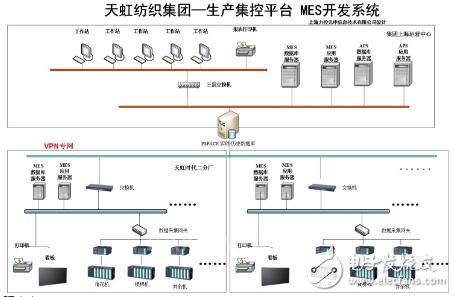
Hunan Red Sun Optoelectronics
The implemented functional modules mainly include:
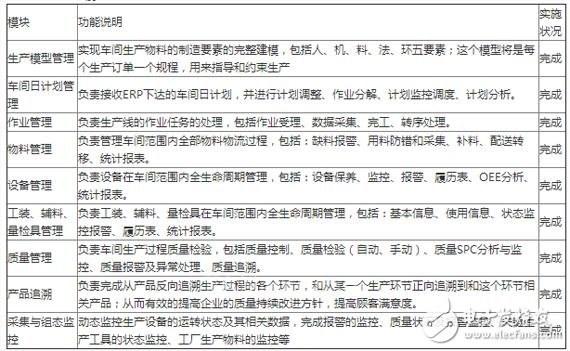
Hunan Red Sun Optoelectronics Technology Co., Ltd. is a wholly-owned subsidiary of the 48th Research Institute of China Electronics Technology Group Corporation. The company focuses on the development and construction of solar photovoltaic manufacturing equipment. The production extends to pull crystal, ingot casting, slicing, and cell production. High-tech industrial projects including component packaging, application products and new energy storage materials. The company has a complete photovoltaic industry chain and is one of the few companies in China with a full range of photovoltaic production capabilities.
Photovoltaic cell manufacturers are facing the challenges and pressures brought by the downturn in the international market. The increasingly fierce market competition requires photovoltaic cell manufacturers to reduce delivery time, increase supply time, and improve product quality while reducing costs. Faced with these challenges, photovoltaic cell manufacturers must improve internal production management and increase the efficiency of the use of manufacturing resources. Therefore, for the managers of photovoltaic cell manufacturers, a real-time, effective manufacturing execution management system that can closely cooperate with ERP management system, MRP system, SCM system, and PDM system is indispensable.
The red solar cell production line is mainly divided into six major processes (textile, diffusion, secondary cleaning, PECVD, screen printing, test sorting), communication and data acquisition of equipment controllers and control software, equipment in the production process Operation status and remote production data of the equipment are centralized and controlled, and data scheduling, process monitoring, and equipment remote operation are implemented.
The data acquisition system can perform statistics and display of device status under various conditions such as device shutdown, idle time, and processing time. After data collection for single equipment and section equipment, and according to user-defined time period, statistical analysis of equipment operating rate, actual work efficiency, equipment load curve, and can automatically generate various forms of statistical reports and pie charts or Bar charts and other charts.
Plug-In Connecting Terminals,Insulated Spade Terminals,Cable Connector Double Spade Terminals,Vinyl-Insulated Locking Spade Terminals
Taixing Longyi Terminals Co.,Ltd. , https://www.longyicopperterminals.com